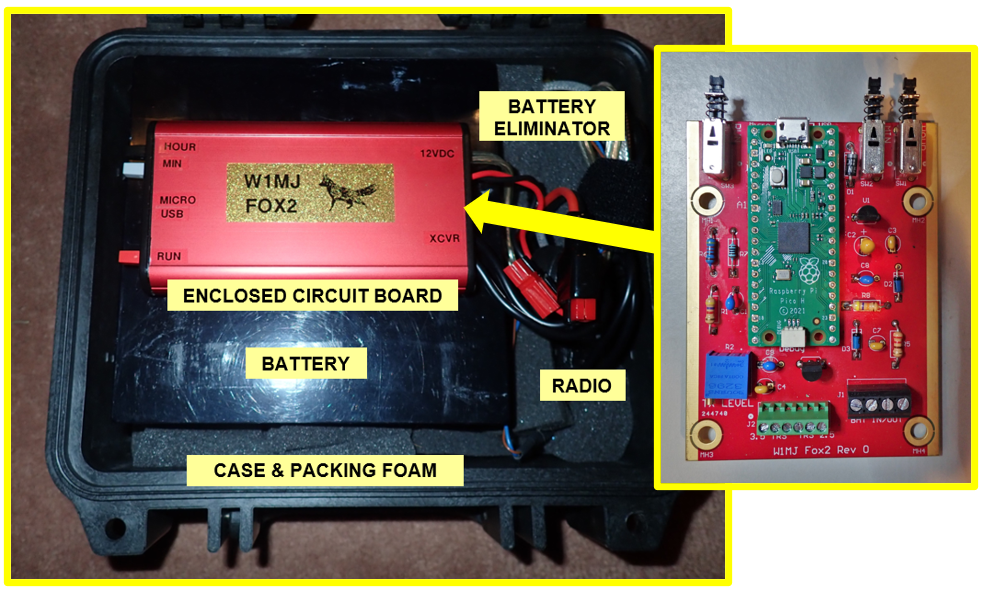The W1MJ Second-Generation Fox
Automated Transmitter for Hidden Transmitter Hunts

The W1MJ FOX2 is an automated transmitter designed for use in hidden transmitter hunts. The fox plays pre-recorded audio messages at regular intervals using a low-cost VHF/UHF FM transceiver. It has two power-conserving modes to extend deployment - Scheduled & On Demand. A Raspberry Pi Pico serves as the controller and MP3 player.
- Design and Assembly Article: PDF | Word
- Technical Presentation: PDF | PowerPoint
- CircuitPython Code: GitHub Repository W1MJ_Fox2
